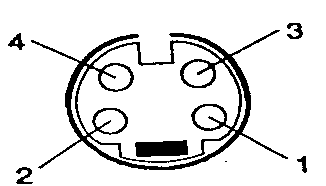Composite to S-Video
Interfacing a composite signal to a S-Video signal is always a little bit tricky. Composite signal use one wire to transmit the composite signal, that is the luminance, the sync and the chroma. S-Video use two wire for that, one for the luminance and the sync (Y), one for the chroma (C). It is why S-Video is also called Y/C.
There are expensive converters on the market. Such converters are specific to the norm you want to convert. We will see here a very cheap alternative, a simple connector that will archive a very good result.
This connector will work in both ways, but of course, the result will never be better than the original signal. Circuits are not matched exactly right, but the picture quality I get is very good. And in any cases, prefer short and good quality cables for video signals.
Schema
Beside the connectors, the circuit use a little 470 pF ceramic capacitor.
Warning: I see the same circuit on a French forum, but with a wire instead of the capacitor. It will work, but at the risk of overloading the output circuits that will feed the two ends of this wire. So, it is much better to use a capacitor. Small ceramic capacitor are very cheap, and even an old one will do the job.
Y-Ground---------|
|---------Composite ground
C-ground---------|
Y-signal---------|
|---------Composte video signal
C-signal---||----|
470pF
1 Y ground 2 C ground 3 Y (luminance+sync) 4 C (chroma)
7 pins S-Video connectors are non-standard connectors for carrying S-video. The use of the pins on those seven pin connectors is not standardized and can vary from manufacturer to manufacturer.
On the other side, it is plenty of possibilities from RCA to scart.
External link
S-video to composite video adapter Take a look here for the original article and more details.
